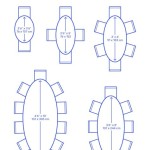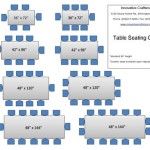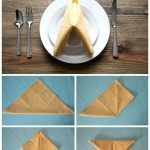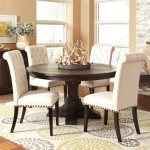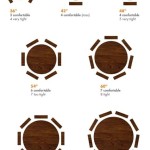How to Use Tablecloth Clips: A Comprehensive Guide
Tablecloth clips are small, often overlooked accessories that play a crucial role in outdoor dining and entertainment. They provide a practical solution to a common problem: keeping tablecloths securely in place, preventing them from blowing away or being accidentally pulled off the table. This article provides a detailed exploration of tablecloth clips, covering their various types, proper usage, and factors to consider when selecting them.
Understanding the Basics of Tablecloth Clips
Tablecloth clips are designed to attach a tablecloth to the edge of a table, holding it firmly in place. They typically consist of two main components: a clamping mechanism and a decorative or functional exterior. The clamping mechanism, usually made of metal or plastic, applies pressure to both the tablecloth and the table edge, creating a secure grip. The exterior can range from simple, utilitarian designs to more elaborate, decorative styles.
The primary function of a tablecloth clip is to prevent the tablecloth from being dislodged by wind, accidental bumps, or curious pets. This is particularly useful for outdoor events such as picnics, barbecues, and garden parties. A securely fastened tablecloth not only enhances the aesthetic appeal of the table setting but also protects the table surface from spills and scratches.
Beyond their practical function, tablecloth clips can also contribute to the overall décor of an event. They are available in a wide variety of materials, colors, and designs, allowing users to choose clips that complement their existing tableware and decorative theme. Some clips are adorned with intricate patterns, while others feature minimalist, modern designs.
Material selection is another critical aspect. Stainless steel clips are known for their durability and resistance to rust, making them a popular choice for outdoor use. Plastic clips are often more affordable and come in a wider range of colors, but they may not be as durable as their metal counterparts. The choice of material often depends on the intended use and the desired aesthetic.
The effectiveness of tablecloth clips hinges on their proper application. Correct placement and adequate spacing are essential for ensuring a secure and even hold. Overloading a table with too much weight without sufficient clips can still lead to slippage, while insufficient clips may not provide enough resistance against the wind.
Proper maintenance is also crucial for extending the lifespan of tablecloth clips. Regularly cleaning the clips to remove dirt and debris can prevent corrosion and ensure that the clamping mechanism continues to function effectively. Storing the clips in a dry place when not in use can also help to prevent rust and other forms of damage.
In summary, tablecloth clips are versatile accessories that offer both practical and aesthetic benefits. Understanding their basic function, construction, and proper usage is essential for maximizing their effectiveness and ensuring a successful and enjoyable dining experience.
Selecting the Right Tablecloth Clips for Your Needs
Choosing the right tablecloth clips involves careful consideration of several factors, including table size, tablecloth thickness, the environment in which they will be used, and the desired aesthetic. Each of these factors plays a crucial role in determining the optimal type and number of clips required.
Table size is a primary consideration. Larger tables naturally require more clips to ensure that the tablecloth is securely fastened across its entire surface. A general rule of thumb is to place clips at regular intervals, typically every 12 to 18 inches, around the perimeter of the table. This spacing helps to distribute the holding force evenly and prevent sagging or billowing.
Tablecloth thickness is another important factor. Thicker tablecloths require clips with a wider clamping range to accommodate the extra material. Some clips are specifically designed for thicker fabrics, featuring a more robust clamping mechanism and a wider opening. Using clips that are too small for the tablecloth can result in a weak grip and an increased risk of slippage.
The environment in which the clips will be used also influences the selection process. For outdoor use, it is essential to choose clips that are resistant to rust and corrosion. Stainless steel clips are a popular choice for outdoor environments due to their durability and weather resistance. Plastic clips may be suitable for indoor use, but they may not withstand the harsh conditions of outdoor environments.
Aesthetic considerations also play a significant role in the selection of tablecloth clips. Clips are available in a wide range of styles, from simple and functional to ornate and decorative. Choosing clips that complement the tablecloth and the overall table setting can enhance the visual appeal of the event. For example, elegant silver clips may be appropriate for a formal dinner party, while colorful plastic clips may be more suitable for a casual picnic.
The material of the table itself can also influence the choice of clips. Some clips are designed with a protective layer to prevent scratching or damage to the table surface. This is particularly important for tables made of delicate materials such as glass or polished wood. Choosing clips with a non-slip grip can also help to prevent them from sliding around on the table surface.
Budget is another practical consideration. Tablecloth clips range in price from inexpensive plastic models to more expensive metal designs. Determining a budget beforehand can help to narrow down the options and ensure that the chosen clips meet the desired requirements without exceeding financial constraints.
In essence, selecting the right tablecloth clips involves a careful evaluation of various factors, including table size, tablecloth thickness, environmental conditions, aesthetic preferences, and budget. By considering these factors, users can choose clips that provide a secure and aesthetically pleasing solution for keeping their tablecloths in place.
Proper Application and Maintenance of Tablecloth Clips
The effectiveness of tablecloth clips depends not only on their quality and design but also on their proper application and maintenance. Correct placement and regular cleaning are essential for ensuring a secure hold and extending the lifespan of the clips.
The first step in proper application is to ensure that the tablecloth is correctly centered on the table. This will help to distribute the weight evenly and prevent uneven tension on the clips. Once the tablecloth is in place, the clips can be attached around the perimeter of the table.
The spacing between clips is a critical factor. As mentioned earlier, a general rule of thumb is to place clips every 12 to 18 inches. However, the optimal spacing may vary depending on the size and shape of the table, as well as the weight and thickness of the tablecloth. For larger tables or heavier tablecloths, closer spacing may be necessary to provide adequate support.
When attaching the clips, it is important to ensure that they are securely fastened to both the tablecloth and the table edge. The clamping mechanism should exert sufficient pressure to hold the tablecloth firmly in place, but not so much pressure that it damages the fabric or the table surface. Adjusting the tension of the clips may be necessary to achieve the optimal balance.
Regular cleaning is essential for maintaining the functionality and appearance of tablecloth clips. Over time, dirt, dust, and food particles can accumulate on the clips, interfering with their clamping mechanism and causing them to become unsightly. Cleaning the clips regularly can prevent these problems and ensure that they continue to function effectively.
The cleaning method may vary depending on the material of the clips. Stainless steel clips can typically be cleaned with soap and water, while plastic clips may require a more gentle cleaning solution. It is important to avoid using abrasive cleaners or scrub brushes, as these can damage the surface of the clips.
After cleaning, the clips should be thoroughly dried to prevent rust or corrosion. Storing the clips in a dry place when not in use can also help to prevent these problems. Avoid storing the clips in damp or humid environments, as this can accelerate the corrosion process.
Periodically inspecting the clips for signs of wear and tear is also important. Check the clamping mechanism for any damage or looseness, and replace any clips that are no longer functioning properly. Replacing damaged clips can prevent accidents and ensure that the tablecloth remains securely in place.
In summary, proper application and maintenance are essential for maximizing the effectiveness and lifespan of tablecloth clips. By following these guidelines, users can ensure that their tablecloths remain securely in place and that their clips continue to function effectively for years to come.

How To An Easy Solution Prevent Fly Away Tablecloths Diy Outdoor Table Cloth Tablecloth

Flexible Tablecloth Clip Wipe Easy Tablecloths

Choice Stainless Steel Leaf Design Tablecloth Clip For Tables Up To 1 2 Thick 12 Pack

Media Diy Com Is Image Kingfisherdigital 16pk Tabl

Table Cover Clips Qty 4 Main Market Event

Yirtree Tablecloth Clips Picnic Table Cloth Cover Clamp For Tables Stainless Steel Holders Clamps 12 Pack Com

Tablecloth Clip Heavy Picnic Table Stainless Steel Temu

Tablecloth Clips Stainless Steel Table Cover Clamps For Indoor Outdoor Use Adjustable Cloth Holders Picnics Parties Weddings Bbq Dinners

16pk Tablecloth Clips For Indoor And Outdoor Use Keep Your Secure Table Cloth Diy At B Q

Lhcer Tablecloth Cover Clips Table Cloth 4pcs Large Stainless Steel Anti Slip Holder Clamps 5 4cm Ca
Related Posts

